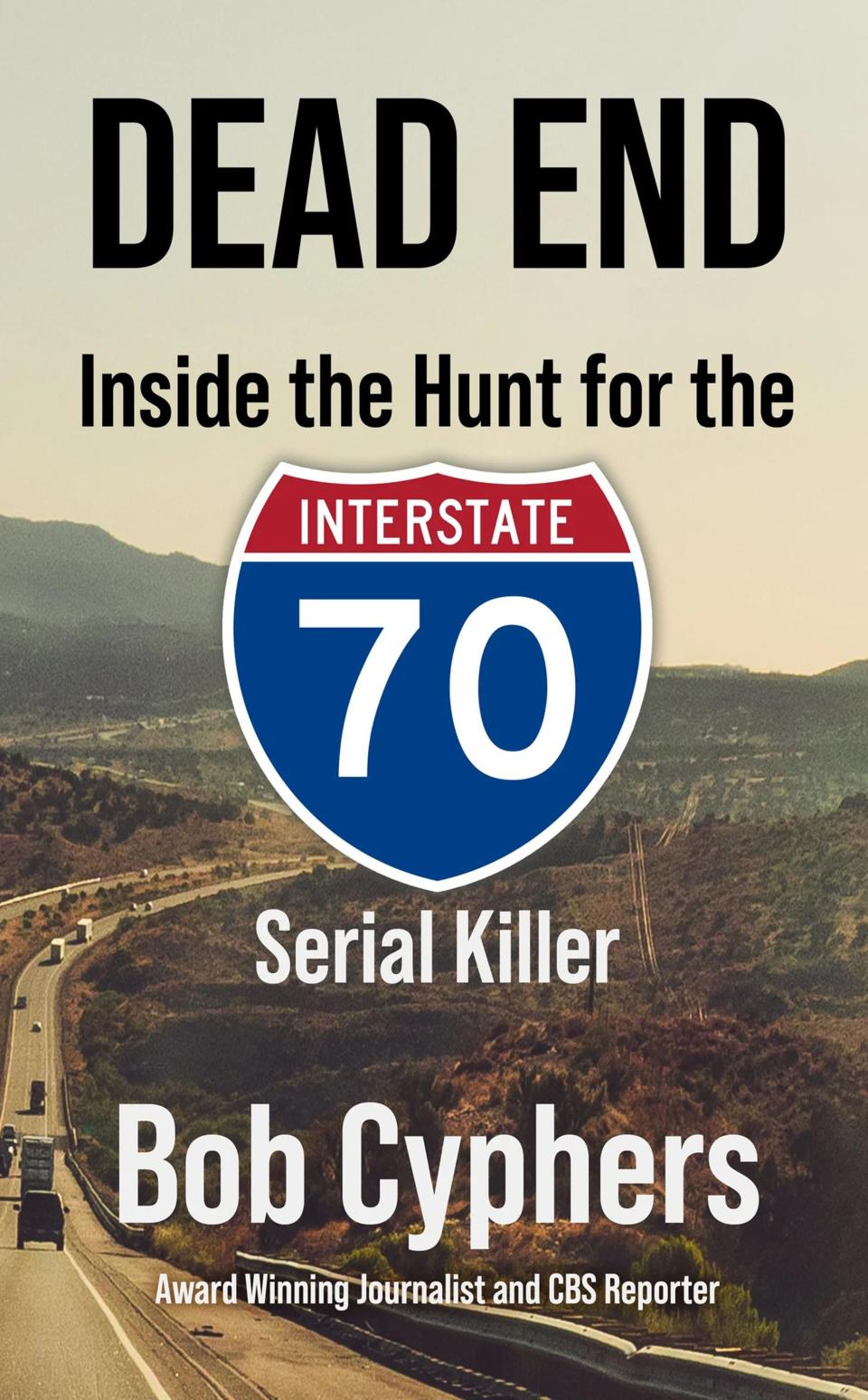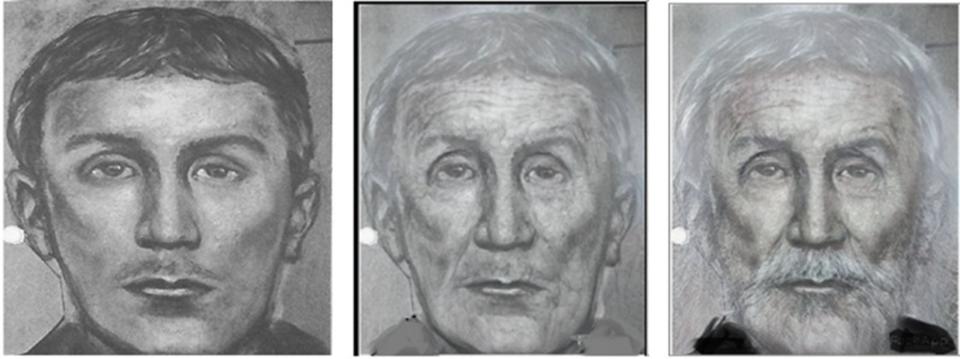New book aims to shed light on 30-year-old cold cases along Interstate 70
- Oops!Something went wrong.Please try again later.
A man crisscrossed the central U.S. from Indiana to Kansas along Interstate 70 more than 30 years ago in a roughly one-month killing spree, seemingly without motive, leading to his being dubbed the I-70 Serial Killer.
A retired St. Louis-area journalist is aiming to keep the investigation alive through a new book about it, releasing Friday via Genius Books, "Dead End: Inside the Hunt for the I-70 Serial Killer."
The shooting deaths of Robin Fuldauer, Patricia Magers, Patricia Smith, Michael McCown, Nancy Kitzmiller and Sarah Blessing remain unsolved and while the police have leads, author Bob Cyphers hopes that information presented in the book can help jog the memories of people who were around at the time of the deaths. It is believed McCown was the lone male victim because he had long hair and may have been mistaken as a woman prior to the suspect entering the ceramics store in Terre Haute, Indiana.
“For those of us in police service who have lived and worked on this case for more than 30 years, we will never stop pursuing this case. From the beginning, we have sought the public’s help in finding this serial killer through the release of appropriate information about the case. Bob’s book will help us continue our pursuit," said Pat McCarrick, retired investigator with the St. Charles Police Department.

One coincidence that stands out to Cyphers about the killings is that many of the victims were covering a shift for a co-worker. Otherwise, they would have had the day off. Each shooting took place in the middle of the day at relatively busy shopping centers. Each of the victims was not assaulted, sexually or otherwise, prior to the shootings, and nothing was stolen. The killings happened in Indianapolis; Wichita, Kansas; Terre Haute, Indiana; St. Charles, Missouri; and Raytown, Missouri.
"Our hope is all the same for me and the police departments, that if somebody reads the book and it jogs a memory or rings a bell and makes them pick up that phone," Cyphers said. "This could have happened in Columbia as easily as in Raytown or St. Louis.
"We are not giving up until they tell us we have no chance, and there still is a chance."
For those that might know something, there are hotlines available by calling 1-800-800-3510 or the St. Charles Police Department CrimeStoppers at 1-866-371-8477.
Early investigations and the cold case task force
Cyphers still was a reporter for KMOV in St. Louis when Kitzmiller was killed May 3, 1992, at the St. Charles Boot Village in the Bogey Hills Plaza at 2079 Zumbehl Road.
"It was just an odd call because it happened in the middle of the day, a beautiful spring day," he said. "I finally was able to pull one of the cops over and ask him what was going on."
Another aspect that made the shooting odd was no robbery in connection to the shooting. There were no leads when investigating family and friends and ultimately the investigation was tied to the previous Indiana and Kansas shootings. What connected them all was the type of gun used. Through ballistics investigations, it was determined that a German-made Erma Werke pistol was used. The gun was at least 70 years old in the 1990s, since the brand of guns was manufactured in the early 1920s and into the 1930s.
"There were so many things unusual about this that I think it is solvable," Cyphers said. "... It is the last gun you would think of to use to kill people, but that is what he used."
This was a time when DNA tests were limited to spittle and semen and security measures for stores generally were just an entrance bell. There were no cameras, Cyphers said. Some physical evidence includes a pair of pants from one shooting scene and a bridal veil from another that Cyphers hopes police can conduct touch DNA forensic investigations on since that method has advanced in recent years, he said.
There were two eyewitnesses both from before and after the shootings took place: one in Wichita and the other in Raytown. The Wichita witness walked into La Bridal Shop in the moments after the shooting and backed out soon after to get away.
"That witness has been so frazzled over what happened, the police department is not really counting on him anymore," Cyphers said.
The Raytown witness, another man, made eye contact with the killer when he looked into the witness' store, which neighbored the one ultimately selected for the shooting.
"They stared at each other, but right next door this witness heard the gunfire, and he saw the same man who had looked in his window, running from the scene," Cyphers said, adding police have a suspect, but they need more physical evidence and witnesses. The killer now would be in his 50s or pushing 60, based on descriptions from the '90s of a man who was 5 feet 7 inches tall, in his 20s, weighing about 140 to 160 pounds, slender to medium build, with short, light brown to auburn (red) hair and beard stubble on his face.

After leads went cold, it would take until late 2021 for a group of retired and current investigators and the FBI, along with Cyphers, to be part of a task force that would reshare the stories of the victims and hopefully track down leads to similar shootings in Texas.
"We started making the trips not to just where the task force met, but got to meet all the police officers, go to all the cities, track down relatives, friends, witnesses, whatever I could. The task force did the best they could and the book now is probably the last gasp we have to be on library or bookstore shelves and there is some new stuff in the book," Cyphers said. "We are hoping someone can read this book and find some nuggets in here they were not aware of and it leads somebody, somewhere to say, 'I know something about this.'"
Similar killings happened in Texas
About a year after the I-70 shootings happened, similar cases started popping up in Texas. While the means and seeming lack of a motive are similar to the I-70 cases, there is not yet definitive proof of their connection, Cyphers said. That didn't stop him and the task force from looking into them.
The biggest difference between the I-70 cases and the ones in Texas is that one of the victims, Vicki Webb, survived. Cyphers was able to track her down.
"If it is the same person, he killed two people in Dallas and then he went down to Houston (to kill Webb). He has shot her and left her to die, but he comes back sensing he didn't quite finish the job. He puts the gun to her head again, pulls the trigger and it jams," Cyphers said.
Webb essentially went into hiding for 30 years after the shooting, which led Cyphers to combing through marriage, divorce and real estate records to try and find Webb.
"I must have made hundreds of phone calls for three or four weeks," Cyphers said, adding he finally did make a connection with Webb. It would take more time and building of trust before she was ready to tell her story. "She is a remarkable woman. She has had enough of hiding. She's done a People magazine cover story, she's done something for the Discovery Channel and she wants to find her guy as much as I do."
Charles Dunlap covers local government, community stories and other general subjects for the Tribune. You can reach him at cdunlap@columbiatribune.com or @CD_CDT on Twitter. Subscribe to support vital local journalism.
This article originally appeared on Columbia Daily Tribune: New book on I-70 Serial Killer aims to reinvigorate investigation

